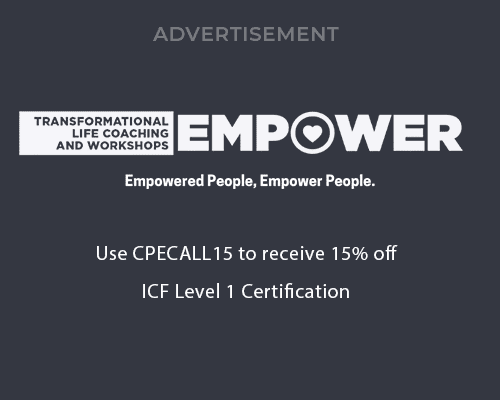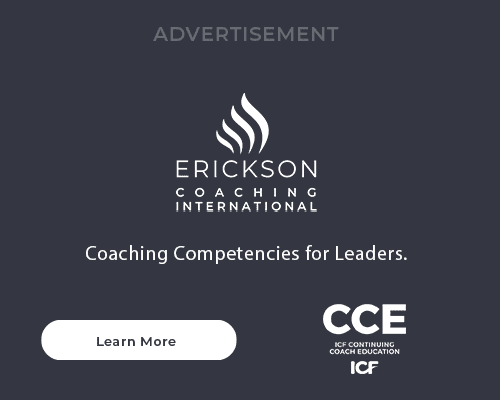10 Easy Steps for Proving the "Value" of Coaching
There are 53,300 professional coaches worldwide who generate $2.356 billion U.S. dollar in revenue globally (2016 ICF Global Coaching Study), and that number is growing rapidly. As the profession continues to grow, the issue of effectiveness and return on investment (ROI) is likely to become more important for coaches. In fact, when it comes to measuring the success of coaching, no metric is more important to top executives than the ROI. Investing in people is not the same as investing in a piece of equipment or any other tangible capital. For one thing, measuring the return on investment in a person is a bit more difficult than, say, measuring the increase in the number of product produced per hour by the new machine that has just been installed in the factory.
ICF-supported studies have indicated that almost all organizations state that they “know” coaching has been effective, but the evidence to support this is mostly anecdotal. Measuring the success of coaching was considered to be a challenge, and the methods used varied among the organizations. For the most part, coaching is measured at the performance level— “Changes in behavior” using 360-degree feedback programs and employee engagement/satisfaction surveys that could be linked back to those who had received coaching. But, most of these tools were readily available in the organization and were not designed specifically to measure the impact of coaching. Coaching professionals are not able to show the Value of coaching programs and justify coaching spend to their executives.
These top executive expectations are a challenge for coaching professionals and talent development professionals. The good news is that they can now meet these challenges with limited resources. Most organizations have the available resources to make it work. ROI Institute has developed a 10 easy steps for evaluating and measuring the value of coaching initiatives; the collective is called “ROI Methodology.” The ROI Methodology is the most widely used process to account for non-capital investments, but, more importantly, it is an approach to accountability through which program owners gather data that can be used to improve their processes as well. The 10 steps are as follow:
Step 1: Develop/Revise Coaching Objectives
Coaching objectives are developed based on needs:
- The needs assessment begins with a review of the opportunity to be realized if the proposed coaching is implemented.
- Next, the business needs are identified. The business needs are met by changing individual performance.
- Performance needs are met by implementing new knowledge/skills presented to the coachees.
- Finally, preference needs focus on how the stakeholders, including the coachees, should perceive the coaching in terms of value and need.
The coaching is developed to achieve the objectives at each level. The coaching can be evaluated at each level, based on the objectives.
Step 2: Plan for Coaching Evaluation
Planning begins as soon as it is decided that an impact study should be conducted and typically involves key stakeholders.
Step 3: Collect Data during Coaching Implementation
Two types of data are collected during a coaching program’s implementation “Reaction data” and “Learning data.”
Step 4: Collect Data after Coaching Implementation
Two types of data are collected after coaching program’s implementation “Application data” and “Impact data.”
Step 5: Isolate the Coaching Effects
While we believe coaching can have a considerable influence on business results, other factors obviously have an impact and are always present and without isolation, there is only evidence, not proof of coaching value.
Step 6: Convert data to monetary value
This step develops a monetary benefit for one or more impact measures linked to the coaching.
Step 7: Identify Intangible Benefits
Intangible benefits are those benefits that we choose not to convert to monetary value. They are measures that cannot be converted to money credibly with minimal resources. Typical intangible benefits are job satisfaction, organizational commitment, teamwork, etc.
Step 8: Tabulate the Costs
The total fully loaded costs of coaching program are needed for the ROI calculation.
Step 9: Calculating the ROI
The return on investment calculation considers the net benefits divided by coaching costs.
Step 10: Generate Report
Reporting the results of the study is an important final step in the ROI Methodology. Properly identifying the audience and providing appropriate information is essential. By default, four audiences are always essential: the coaches, the immediate managers of the coaches, the sponsors of the coaching program, and the staff team members.
In the future, more and more coaching professionals will be asked for the ROI on coaching expenditures. While challenging to calculate, it will be critical that monetary values be assigned to results in order to measure this investment in an organization’s most important capital “its people.”





Thanks for the article Nader. I personally believe that we are doing our clients and the industry a disservice when we don’t measure our coaching/impact. After all, coaching is about creating behavioral change and most coaches either don’t know how to or simply do not measure their impact.
That led us to innovate around measurement. Seems like the work we are doing is closely aligned with your ROI methodology. We measure at 4 levels (fairly typical OD approach) – reaction, learning, behavior and organizational impact.
To help measure at the behavioral change level, we created a cloud-based tool called Coachmetrix that integrates many of the elements you mentioned in this post – clear objectives, involving stakeholders and ongoing measurement. Now we can definitively know whether our clients are changing as a result of coaching.
Keep on measuring. It’s an important credibility builder in our growing industry.
Thanks Sal, awesome! the coachmetrix seems very interesting, I agree with you measurement should part of any coaching program. Executives are expecting coaching professionals to be able to “show them the money”
How do we calculate the “Data,” “Benefits,” and “Costs” that you refer to in your article? Or, maybe we need to come to your presentation!
Thanks–Dan
Thanks Nader for the input and the insights
The steps are in logical orders and make sense that what counts by the end is the US$ return and here may hear more around quantification, which party does that? on what basis? what measures of standardization and follow up? thanks
Thanks for the article. Agree with the overall approach.
Sal mentioned the 4 levels (Kirkpatrick) but you go one level further (ROI as per Phillips). We went through this exercise a few times and the biggest challenges are:
– measuring the actual impact and put a $$ value to it that’s somewhat accurate;
– isolating the ‘measuring uncertainties’, means what else created the impact apart from the coaching and how can we ‘filter’ that out?
These are 2 major challenges which can be addressed, but which are very difficult to be somewhat accurate with – and not spending a huge amount of effort to figure out accurately. As a result, it can be easy for management to ‘dismiss’ the measured ROI as not reliable.
An effective, well trained coach can deliver material returns to a leader, team, organization, etc.
Respectfully, if I’m having to have the “is this worth the value” conversation, then I’ve truly failed on the front-end to educate the client about the tangible benefits and impact of coaching.
Clients either get it or they don’t. If they truly don’t and want to waste time focused on the “is this worth the value,” I’ll respectfully move along and allow someone who has the time and interest to spin their wheels with that client.
Well said. William Bruce Cameron said that “…not everything that can be counted counts, and not everything that counts can be counted”. It’s difficult to quantify the success of coaching based solely on the coachee behavorial impact. A supportive environment, especially the superior and team plays a significant role.
Thank you so much Nadar for this article! These steps are valuable when offering coaching services to individual, group, or corporate clients.
Thank you for your contribution, Nader. Whereas I appreciate the desire by the coaching community to calculate ROI’s, I have argued in a recent article that we are actually harming our profession more than benefitting it with the approaches that have been taken. I would be interested in your thoughts on this. You can find the article on https://www.coaching-at-work.com/2017/03/02/roi-a-waste-of-our-time/.
Nader, thanks for this thoughtful, detailed and strategic outline. I have found coaching can proliferate without ROI in certain circumstances and not as much in others. Some great ideas here and a logical process.
What I take issue with is the first step, though, as my training and experience have taught that performance needs aren’t always or primarily met by what the coach teaches or suggests- I call that training. A big way that I distinguish coaching is about it being primarily a process of inquiry, insight brought on by powerful questions and new ways of looking, and collaborative action planning. I do share resources and sometimes directly teach skills, but that isn’t the bulk of actual meetings.
For me, that has to be considered in order to really evaluate coaching at each level of those well-laid-out objectives.
Great Article Nader! I was thinking about that if you are Iranian or not? because of your name. However, Good luck.
Why Mr.Bechini doesn’t reply comments and audience anymore? Is he left Blogging at Coachfederation?
Hi Payoun, sorry I have noticed your comment, please feel free to ask me any question 🙂